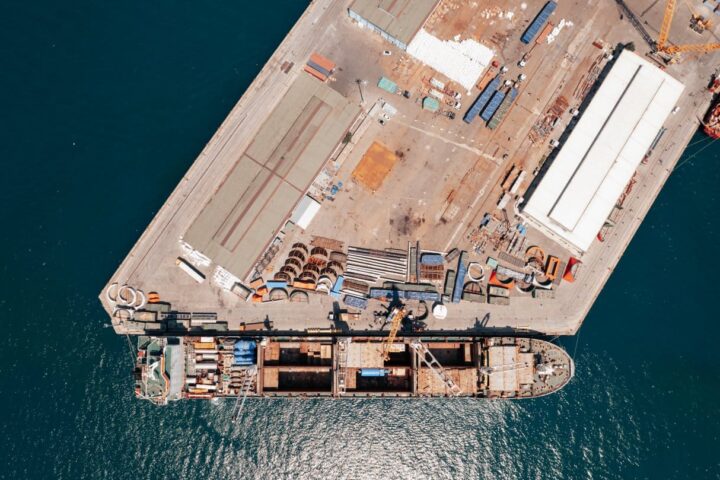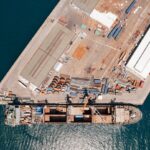The inauguration of a new president in the United States often marks a shift in global economic policies and trade dynamics. The transition in leadership brings with it new priorities, diplomatic strategies, and economic agendas that can significantly influence markets across the globe. In particular, the Asian economies—known for their intertwined trade relationships and financial dependence on the U.S.—stand to be directly affected. Here, we explore the potential impact of the new U.S. presidency on Asian markets and economies.
Trade Policies and Their Ripple Effects
Renewed Trade Agreements and Tariff Adjustments
One of the first areas likely to experience change is trade policy. If the new administration opts to renegotiate or rejoin trade pacts like the Comprehensive and Progressive Agreement for Trans-Pacific Partnership (CPTPP), it could open doors for stronger trade collaborations in Asia. Adjustments to existing tariffs, particularly those imposed on China and other Asian countries, could alleviate pressures on export-reliant economies such as South Korea, Vietnam, and Japan. Such actions may restore growth trajectories in manufacturing hubs and boost investor confidence across the region.
Technology Trade and Semiconductor Dynamics
The ongoing technological competition between the U.S. and China has placed semiconductors and advanced technology at the center of global trade disputes. A shift in U.S. policy to ease restrictions on technology exports could benefit major players in Asia, including Taiwan’s TSMC and South Korea’s Samsung. Conversely, heightened restrictions could push Asian economies to seek greater self-reliance, spurring innovation but also potential fragmentation of global supply chains.
Geopolitical Stability and Investment Climate
Focus on Strategic Alliances
A new presidency often reshapes diplomatic ties and alliances. Strengthening strategic partnerships with countries like Japan, South Korea, and India could enhance regional stability. Such alliances might also pave the way for more foreign direct investments (FDIs) and infrastructure projects under initiatives like the Indo-Pacific Economic Framework.
China-U.S. Relations
The relationship between the U.S. and China remains a cornerstone of Asian market dynamics. A cooperative stance could reduce geopolitical tensions, stabilize currency markets, and encourage bilateral investments. However, if the new administration takes a confrontational approach, Asia might face disruptions in trade flows and increased economic uncertainty.
Climate Policies and Green Energy Transitions
Implications of U.S. Environmental Commitments
The new administration’s stance on climate change, particularly its recommitment to international accords such as the Paris Agreement, could spur global investment in green technologies. Asian economies, especially those investing in renewable energy—like China, India, and Indonesia—could benefit from increased collaboration and funding opportunities for sustainability projects.
Opportunities for Renewable Energy Trade
Policies that promote the export of clean energy technologies could boost trade with Asian countries looking to expand their green infrastructure. This would also align with global trends toward carbon-neutral economies, further integrating Asia into a sustainable global economy.
Financial Market Reactions and Currency Fluctuations
Volatility in Asian Currencies
U.S. fiscal policies and interest rate decisions under the new leadership are closely watched by Asian financial markets. A stronger U.S. dollar could lead to depreciations in Asian currencies, impacting exports and foreign debt servicing. Conversely, a weaker dollar might bolster Asian economies by making their exports more competitive.
Stock Market Trends
Asian stock markets are highly sensitive to shifts in U.S. policy, especially in sectors like technology, pharmaceuticals, and energy. Policies promoting global recovery and infrastructure development could result in bullish trends across Asia’s equity markets.
Regional Integration and Supply Chain Realignments
Diversification from China
If the U.S. presidency pursues policies encouraging supply chain diversification, countries like Vietnam, Malaysia, and the Philippines stand to gain as alternative manufacturing hubs. This shift may create new opportunities for growth in these economies while reducing over-reliance on China.
Rebuilding Supply Chain Resilience
The pandemic exposed vulnerabilities in global supply chains. The new administration’s focus on building resilient supply chains could foster collaboration with Asian economies in areas like pharmaceuticals, semiconductors, and rare earth minerals.
The Trump Legacy and Its Lingering Effects
Impact of Trump’s Policies on Asia
The previous administration under Donald Trump left a significant imprint on U.S.-Asia relations. Trump’s “America First” agenda saw the imposition of tariffs on Chinese goods, sparking a trade war that disrupted global supply chains and affected key Asian economies. Countries like Vietnam and Malaysia benefited as alternative manufacturing hubs, but others, particularly China, experienced slower growth in exports to the U.S.
Diplomatic Shifts
Trump’s emphasis on confronting China’s economic practices led to heightened tensions in the region. However, it also encouraged nations such as Japan, South Korea, and India to strengthen their trade and security partnerships with the U.S. These alliances may continue to play a role under the new presidency, albeit with a potentially less confrontational tone.
Economic Resilience Post-Trump
Asian markets showed resilience by adapting to the shifting trade landscape during the Trump era. The push for regional agreements, such as the Regional Comprehensive Economic Partnership (RCEP), was partly a response to U.S. withdrawal from multilateral trade pacts. These agreements could complement any renewed U.S. engagement under the current administration.
Conclusion
The new U.S. presidency marks a pivotal moment for Asian markets and economies. From trade policies and geopolitical dynamics to green energy initiatives and financial market adjustments, the ripple effects of U.S. leadership decisions will resonate across Asia. While uncertainties remain, the potential for strengthened partnerships and economic opportunities offers a cautiously optimistic outlook for the region.












